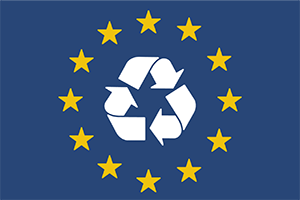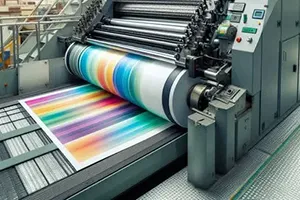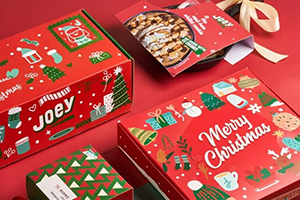Introduction: Why Offset Printing Could Be Your Packaging Game-Changer
Have you ever been captivated by the crisp, vivid imagery on product packaging and pondered over the magic behind it? If your business involves procuring boxes, labels, or cartons, discovering the power of offset printing could be the breakthrough you’ve been searching for.
Far too often, brands settle for lacklustre prints or uneven shades, simply due to an ill-suited printing method. Referred to as offset lithography, this technique shines in the realm of commercial printing, offering impeccable, superior results, particularly on paper. Moreover, with its ability to ensure consistent colour accuracy through systems like CMYK and Pantone Matching, it stands unrivalled.
Let’s explore its essence, unravel its process, and understand why, especially for large runs, it could transform your brand’s presence.
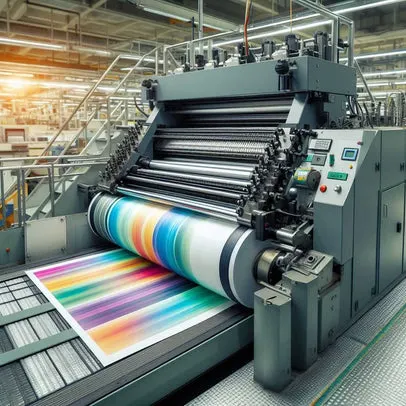
What Exactly Is Offset Printing, and Why Was It Created?
At its core, offset printing is a widely used paper printing method that transfers ink from a flat plate to a rubber blanket, before delicately imprinting it onto a surface such as paper or cardboard. Unlike traditional techniques where ink is applied directly to the material, this ingenious “offset” intermediary step works like a soft relay, ensuring a flawless and polished finish.
Emerging from the demand for consistent, large-scale printing, this method traces its roots to the late 19th century, with significant advancements like Robert Barclay’s 1875 patent for a rotary offset press. It harnesses a fascinating principle—oil and water’s natural aversion—to maintain clear separation between printing and non-printing zones on the plate.
For packaging industries, offset printing is nothing short of a boon, effortlessly producing thousands of sharp, uniform designs at a remarkably low cost. Indeed, it operates like a steadfast companion, delivering impeccable results with unwavering reliability time after time.
Why Do Packaging Buyers Struggle with Printing Issues?
If you’ve ever overseen a brand, chances are you’ve grappled with vexing problems like inconsistent hues, blurred emblems, or unexpected production hiccups. These frustrations often stem from selecting an unsuitable printing technique or opting for substandard materials.
Packaging isn’t merely a container; it serves as the initial impression your product makes on consumers. A subpar print can shriek “inferior,” overshadowing even the most exceptional contents within.
Moreover, many buyers overlook how certain materials, such as thin paper or specific plastics, can reject particular inks due to chemical incompatibilities. While offset printing shines on paper-based products like folding cartons, it often falters on delicate films, leading to disappointing results.
Understanding the unique advantages and limitations of each method, paired with the right ink compatibility and material quality, can shield you from costly blunders and ensure your packaging genuinely reflects the excellence of your brand.
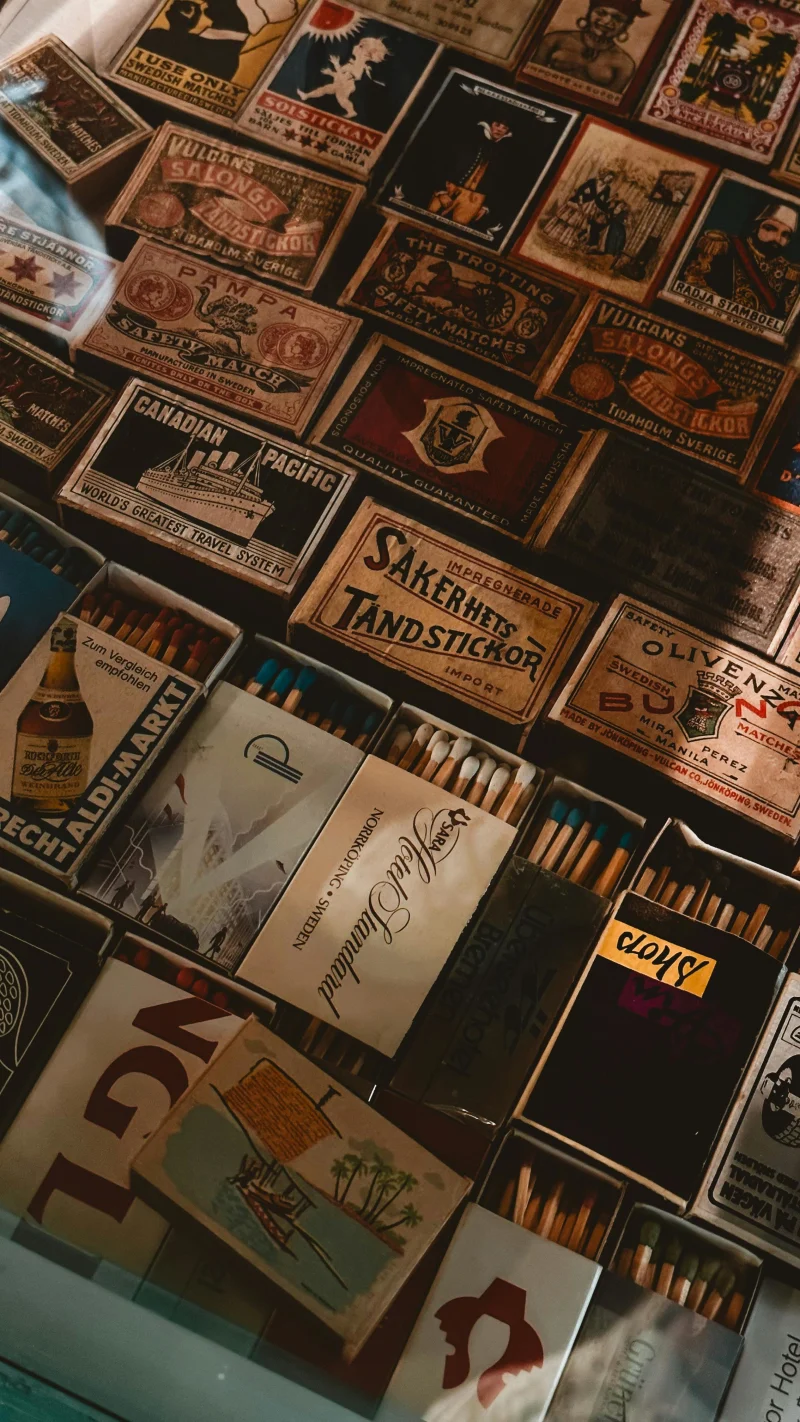
How Does Offset Printing Work? A Simple Step-by-Step
Ever pondered the magic behind offset printing? Let’s unravel it step by step, much like unwrapping a treasured family recipe for a perfect batch of biscuits. This printing technique is a harmonious fusion of exactness, driven by offset printing presses and a dash of scientific wizardry.
- Step 1: Designing the Plate – Skilled artisans etch printing plates, typically from aluminium, where image zones eagerly embrace oily ink, while non-image areas shun it with a watery shield. Each shade demands its own plate, meticulously crafted using laser technology for precision. Imagine a canvas where only chosen patches drink in the pigment.
- Step 2: Inking the Design – Secured on a rotating cylinder, the plate glides through rollers of water and ink. Water adheres to the empty spaces, while ink bonds with the image, mirroring the way oil dances atop water—never mingling. Consequently, a clear separation emerges, ensuring pristine results.
- Step 3: Transfer to the Blanket – The inked design is relayed to a pliable rubber blanket rather than directly onto the paper. Acting as a mediator, this blanket smooths over minute flaws on the surface, guaranteeing an impeccable finish with every press.
- Step 4: Completing the Impression – The blanket then imprints the design onto the material—often paper or card—with the aid of an impression cylinder, applying uniform pressure for crisp, vivid details. Thus, the image takes its final form with striking clarity.
- Step 5: Drying and Repeating – The dense, oil-based inks, almost paste-like in texture, may require up to 24 hours to set unless hastened by a UV varnish. For multi-coloured outputs, several plates are employed, reiterating the cycle to layer vibrant hues into a seamless masterpiece.
This intricate waltz of steps underscores why offset printing remains the gold standard for superior print quality, particularly when precision in packaging is utterly indispensable.
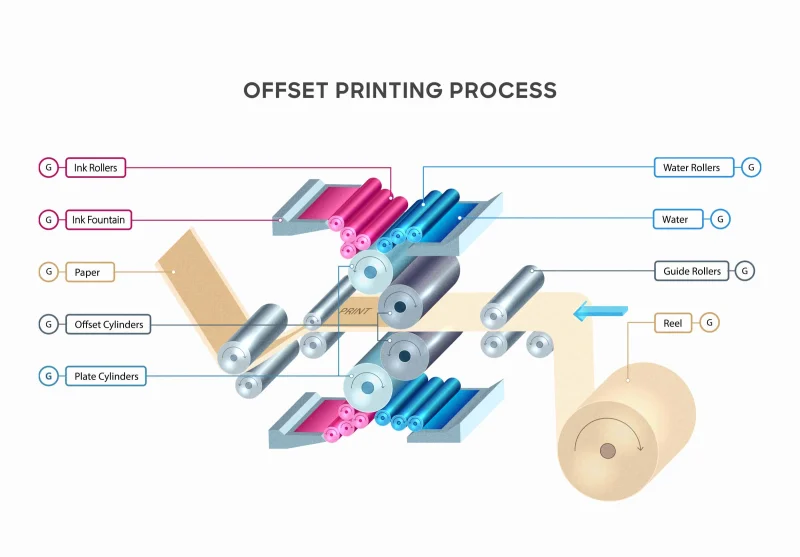
What Makes Offset Printing a Smart Choice?
Choosing offset printing transcends a mere technical decision—it’s a calculated strategy to elevate your brand. Here’s why it frequently surpasses other methods, serving as a reliable beacon steering you towards packaging excellence.
- Exceptional Precision: Offset printing delivers impeccable sharpness and minute details, ideal for intricate logos or refined gradients. Its rubber blanket technology ensures edges remain razor-sharp, standing firm where other methods falter under scrutiny.
- Cost-Effective for Volume Orders: While the initial setup, including plate creation, demands time and investment, the cost per unit drops dramatically with bulk runs. Planning to print 10,000 carton sheets? Offset often proves to be a wallet-friendly champion.
- Consistent Colour Brilliance: Thanks to minimal dot gain, where ink spread is tightly controlled, colours remain vibrant and uniform across thousands of impressions. Moreover, real-time adjustments ensure precision with every batch.
- Versatile Material Mastery: From robust packaging boxes to fragile labels, offset thrives on paper substrates, producing a sophisticated finish that commands attention on retail shelves.
Consider a firm like C MIC Packaging, which harnesses these strengths of offset printing to assure clients of consistent, premium outcomes without sacrificing speed. Our relentless focus on quality control guarantees that your designs remain pristine, batch after batch, forging a seamless link between vision and reality.
Where Does Offset Printing Fall Short?
No printing technique is flawless, and offset printing comes with its own set of peculiarities. Imagine it as a seasoned marathon runner—unstoppable on a well-trodden track but faltering on rocky paths. Let’s dive into its limitations.
- Drying Delays: The oil-based inks used in offset printing often require a full day to dry, unless aided by a varnish. If you’re racing against tight deadlines, meticulous planning becomes essential.
- Material Mismatches: Offset’s water-based system struggles with plastics and thin films, rendering them unsuitable for this method. In such cases, exploring alternative printing options is often necessary.
- Setup Complexities: Preparing plates and ensuring colour alignment is a time-intensive process, making small print runs less economical due to high initial costs. For a modest batch of 100 items, digital printing frequently proves to be a smarter choice.
- Surface Sensitivities: The paper must be robust and pristine to avoid issues like stray fibers adhering to the blanket, which can spoil the output. Moreover, lightweight materials tend to succumb under the heavy application of ink.
By understanding these constraints, you can effectively match the most suitable offset printing techniques to your project, thereby avoiding potential pitfalls with ease.
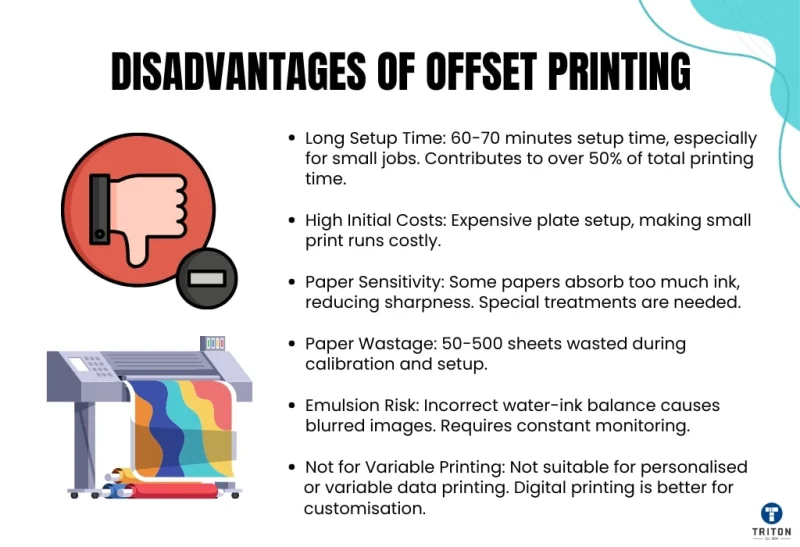
How Is Offset Printing Used in Packaging, and Is It Right for You?
Offset printing dominates the packaging realm with undeniable prowess, crafting many of the refined products gracing your daily life. Envision that elegant cereal box or opulent perfume carton perched on your shelf. More often than not, offset printing has breathed life into those captivating designs.
It remains a top choice for folding cartons, bottle labels, and even corrugated packaging sheets, owing to its exceptional precision and resilience.
Might it suit your specific requirements? If you’re producing thousands of corrugated boxes or paper labels adorned with detailed artwork, offset emerges as your winning card. However, it falters with flexible plastics, shining brightest instead with rigid or semi-rigid paper materials. Picture your brand’s emblem radiating on a sturdy box—offset ensures that brilliance with unmatched clarity.
Industry leaders like C MIC Packaging provide bespoke solutions to align with your distinct vision, adeptly navigating complex substrates and guaranteeing impeccable colour accuracy. Indeed, our specialised knowledge, paired with sustainable practices such as solvent-free inks inspired by innovators like Amcor, could be the cornerstone in transforming your packaging dreams into reality.
Conclusion: Ready to Transform Your Packaging with Offset Printing?
Now that you’ve got the full picture on offset lithography, you can see why it’s a powerhouse printing process for crisp, consistent packaging designs. From its clever oil-and-water chemistry to its mastery of bulk runs, offset printing brings unmatched sharpness to paper products like cartons and labels. Sure, it’s got quirks—slow drying and substrate limits—but its strengths often tip the scales for commercial printing.
If you’re wrestling with packaging choices, think about how offset’s precision could elevate your brand’s presence. Not sure if it’s the perfect fit for your next project? Connect with pros like C MIC Packaging for personalized guidance. With their dedication to quality and customization, they could help turn an ordinary box into a memorable first impression. Let’s make your packaging tell a powerful story—reach out today!
